
...Y un experimento intelectual y divertido. Voy a empesar en Español y luego lo traduciré al inglés. Vamos a ver como fucniona. En los primeros años de inmigraccion a un pais donde hablamos en espanol, la unica manera de conversar con gente, para mi, era hablar de animales, plantas y yuyos o hongos. Esto era el todo de mi vocabulario. Como vivíamos en el campo, no íbamos muy a menudo a la ciudad ni a ningún lado.. Mi 'companero' me rechazó por mis ganas de hablar y practicar español en casa (sí, él ya hablaba y entendía... yo no, nada de nada.) Entonces los libros de ciencias me acompañaron sobre todo. Y escribir sobre esos temas me genera ansiedad como quiero fumar tabaco... Dejé de hacerlo así que uso esta energía del nerviosismo para escribir, ja, ja. ta. vamos arriba.
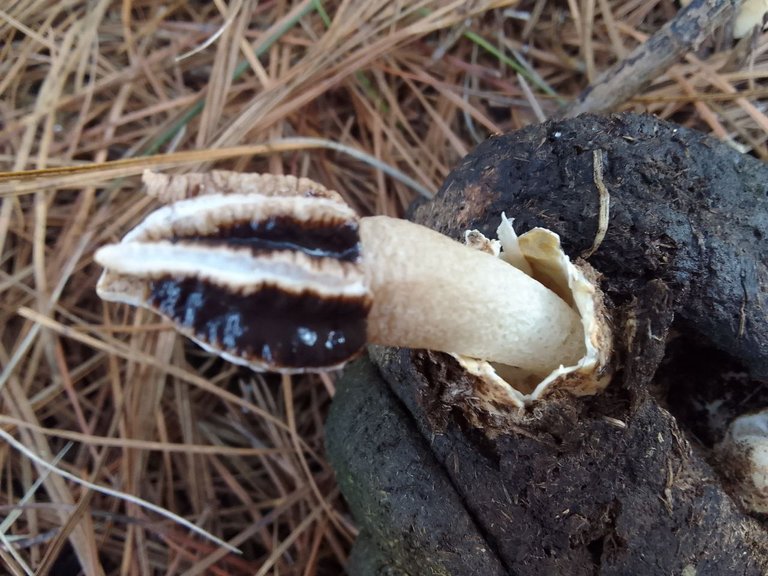
Hoy encontre a un hongo que siempre quieria conocer en vivo, mas sólo en un libro. Este es un tipo de "stinkhorn" en ingles, que quiere decir "cuerno hediondo" en espanol tambien "falos hediondos" Los que pude tomar sus fotos estan ejemplares jovenes. Cuando les maduran los 'brazos' de la punta..el parte que parecen como un popo-flor, se abren en forma de una popo-estrella..casualmente su olor es muy parecido al Aseroe Rubra, pero asi en este momento todavia cerradas estan menos apestosos. Me imagino que su olor se vuelve más fuerte cuando maduran y se abren.
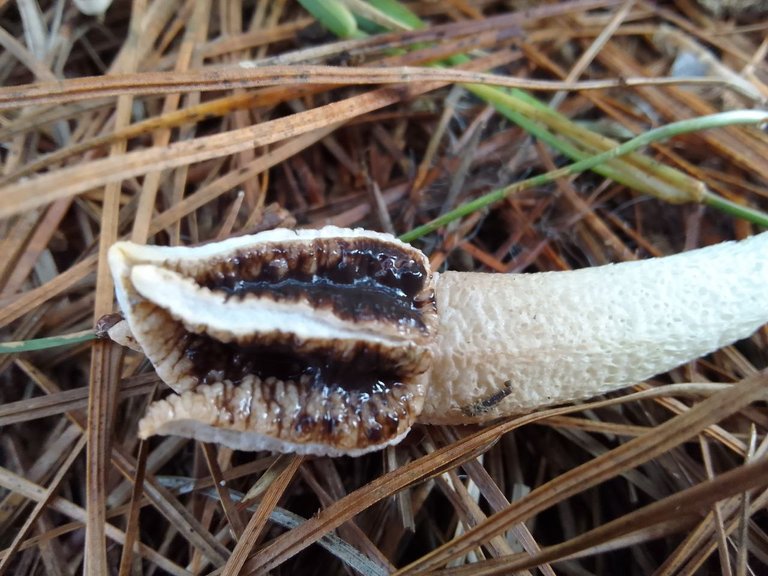
Lo que m'encata es por su juventud, podemos ver el "huevo" del que nacen. Si, este tipo de hongo emerge de un ovulo, y cae de el despues sin conexión con el micelio.
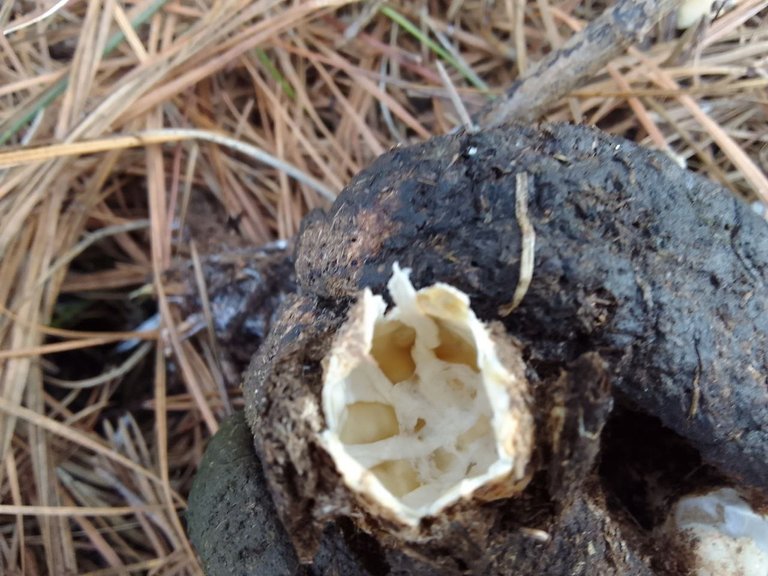
Sus "tallos" vastagos, u pseudopies blanca y esponjosa crecen hasta 10 cm. El parte popo-flor en su ápice se abre generalmente con 5 brazos o, a veces, 8, triangulares y de 1 a 2,5 cm de largo. Las esporas se forman en el interior, entre los brazos, en una baba olorosa de color marrón o verdoso que atrae a las moscas para distribuirlas. Su nombre en ingles es "Lizard's Claw Stinkhorn" que quiere decir "Falo hediondo garra de lagartija".
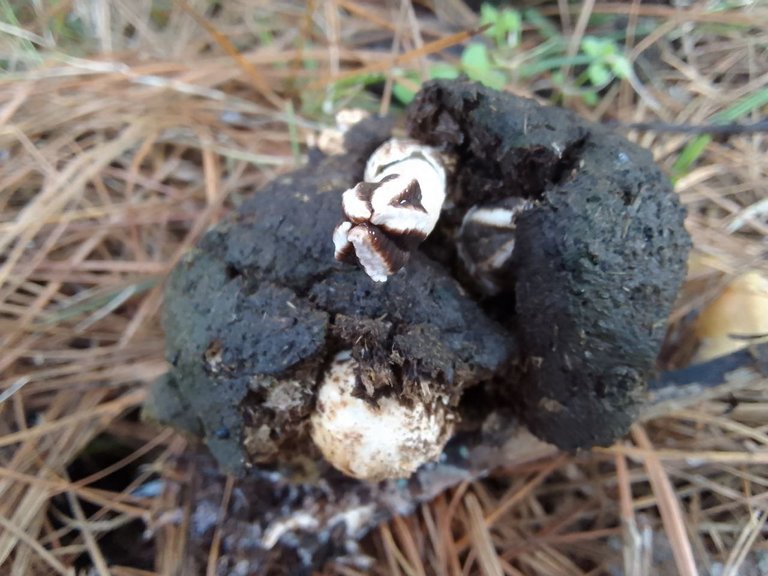
En China y otras partes de Asia se consumen huevos de falo hediondos cuando aún están cerrados y los de L. cruciatus se consideran un manjar y se les atribuyen propiedades medicinales.
Hoy me enteré de que existen algunas especies de falos apestosos que en Asia también venden su parte fructífera, entera y seca por propiedades supuestamente afrodisíacas. La Medicina Tradicional China tiene mucho valor para mi, y existen estudios científicos sobre muchos temas y medicinas relacionadas con ella. También hay varias medicinas que considero magia simpática. Puedes tener un valor por efecto placebo y eso NO es nada. Pero lo dejaré pasar.
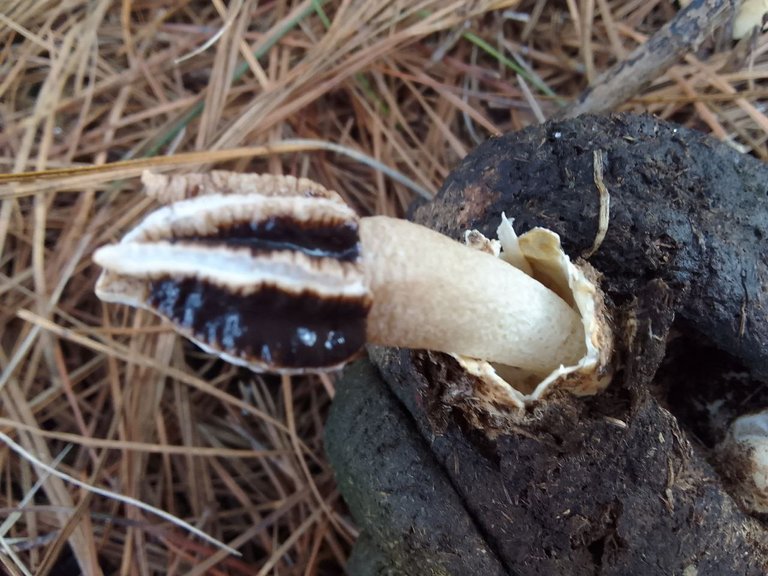
...And a fun intellectual experiment. I'm going to start in Spanish and translate it to English after. Let's see how it works. In the first years of my immigration to a country where we speak Spanish, the only way to talk to people, for me, was to talk about animals, plants and wildflowers or fungi. This was the whole of my vocabulary. Because we lived in the country and didn't go to the city very often... my 'partner' having rejected my desire to speak and practice Spanish at home (yes, he already spoke and understood... I did not.) so the science books accompanied me above all. And writing about those topics makes me anxious like I want to smoke tobacco... I stopped doing it so I will go on using this energy of nervousness to write. Hah, ok, up we rise.
Today I found a mushroom that I always wanted to know in person, not only in a book. This is a type of "stinkhorn" in English, which means "stinking horn" in Spanish also <>. Those whose photos I was able to take are young specimens. When the 'arms' at the tip mature...the part that looks like a poop-flower opens in the shape of a poop-star...coincidentally its smell is very similar to Aseroe Rubra, but at this moment being still closed they are not super stinky. I imagine that their smell becomes stronger when they ripen and open.
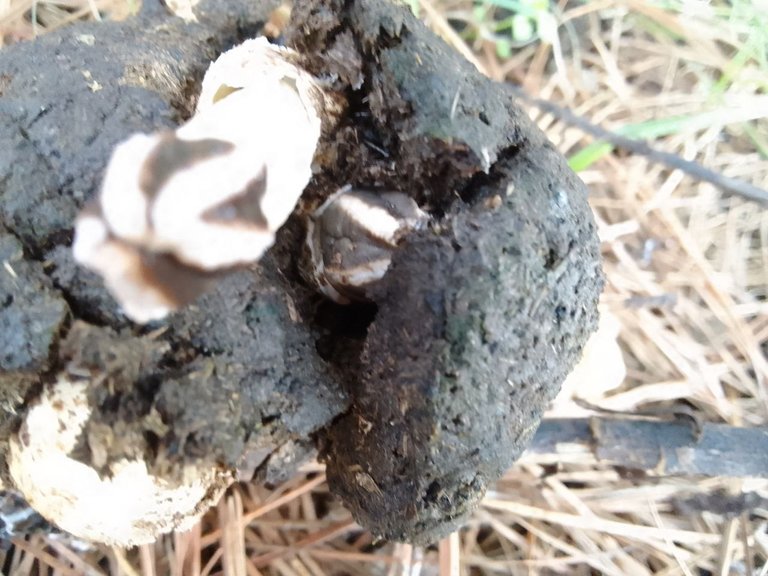
What enchants me is that because of their youth, we can see the "egg" from which they are born. Yes, this type of fungus emerges from an "egg", and falls from it later without connection to the mycelium.

Its "stems", or white, spongy pseudofeet, grow up to 10 cm. The poo-flower part at its apex opens with usually 5 arms or sometimes 8, triangular and 1- 2.5 cm long. The spores form inside between the arms in a brownish or greenish, smelly slime that attracts flies to distribute them.

Its name in English is "Lizard's Claw Stinkhorn".
In China and other parts of Asia they consume the unopened eggs of certain stinkhorns and those of L. Cruciatus are considered a delicacy and considered to have medicinal properties. I learned today that there are some species of stinkhorns that in Asia whose fruiting part are sold for consumption whole and dried, for purported aphrodisiac properties.

Traditional Chinese Medicine has a lot of value to me and there are scientific studies on many topics and medicines used in it. There are also some ‘medicines’ that I consider to be sympathetic magic. They may have a placebo-like value and that is NOT nothing. But I will pass on this one.
Congratulations @melibee! You have completed the following achievement on the Hive blockchain And have been rewarded with New badge(s)
Your next payout target is 50 HP.
The unit is Hive Power equivalent because post and comment rewards can be split into HP and HBD
Your next target is to reach 200 upvotes.
You can view your badges on your board and compare yourself to others in the Ranking
If you no longer want to receive notifications, reply to this comment with the word
STOPCheck out our last posts: